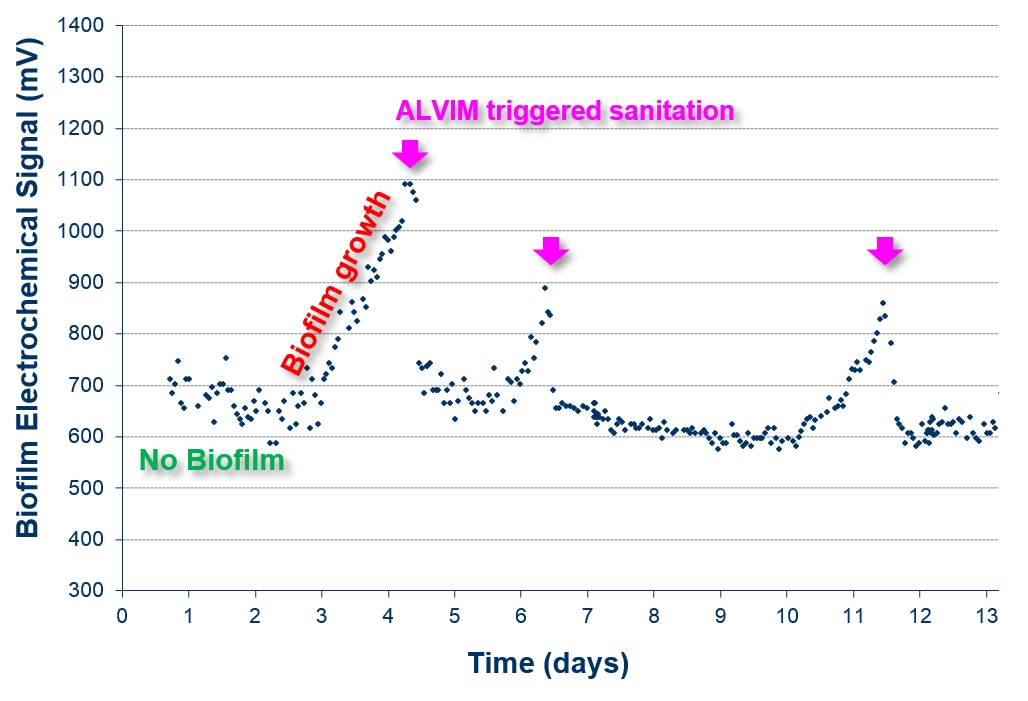Reverse osmosis desalination [Download this application case as PDF file]
In reverse osmosis (RO) applications, bacterial growth on membranes can greatly reduce the efficiency of the process. The injection of chemicals (usually called “biocides”) aimed at preventing this biological growth, requires a tradeoff between treatment efficiency and prevention of damages caused by such substances. Indeed, since many biocides are oxidizing agents, any contact with RO membranes shall be avoided.
In this reverse osmosis desalination plant, before the installation of the ALVIM Biofilm Monitoring System chlorination was applied 24/7, without any check on the real need or effectiveness of such treatment.
After the installation of ALVIM Biofilm Sensors, the biocide was injected only when needed, based on the real time indication provided by the ALVIM System.

This approach allowed for a reduction of more than 90% in the total amount of chlorine used in the plant, without any loss of efficiency. At the same time, the ALVIM System allowed to check the effectiveness of the biocide. Taking into account that a large desalination plant can spend up to 1.5 million $ per year in biocides, the use of the ALVIM Biofilm Monitoring System can provide great savings.
Read the full article.
Published on
Water Research 45 (2011), pp. 1651-1658
|
Do you have a similar problem with biofilm?
|





